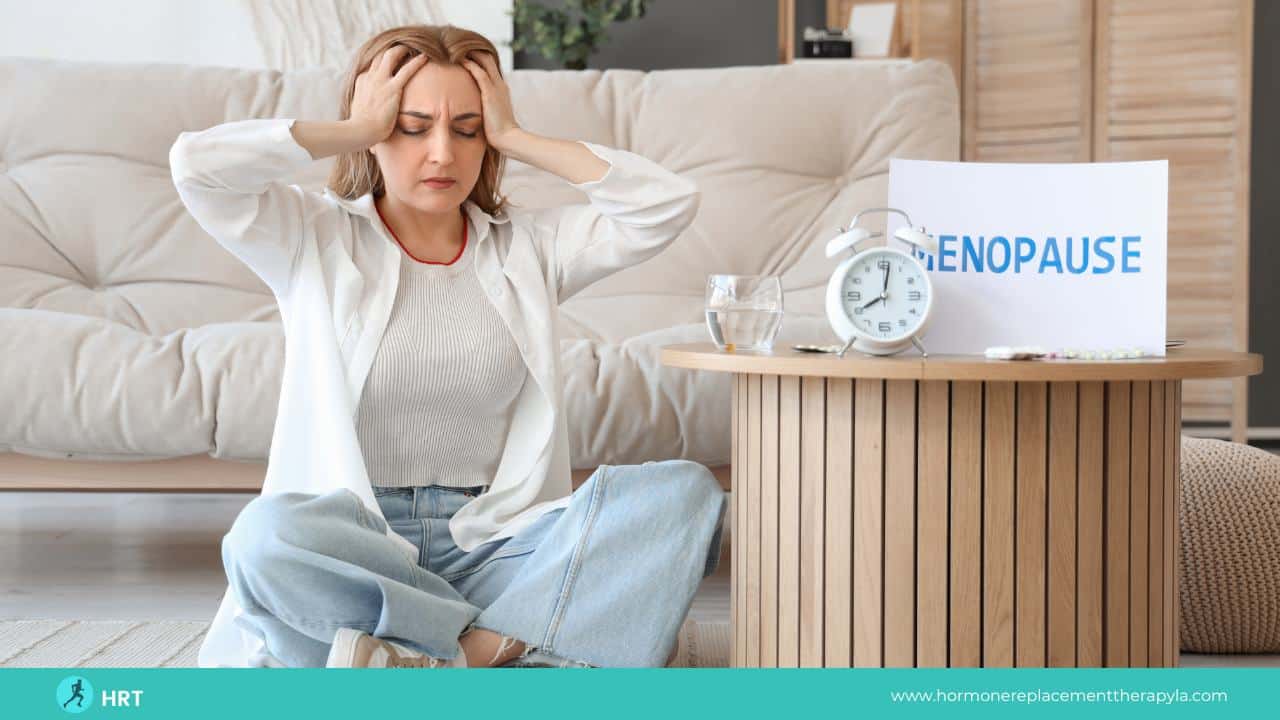Osteoporosis, often called the “silent disease,” affects millions worldwide, leading to weakened bones and an increased risk of fractures.
It’s crucial to understand the life-threatening consequences associated with this condition, particularly fractures and falls. In this blog post, we’ll explore how osteoporosis can turn an ordinary fall into a potentially fatal event, delving into the dangers of fractures, the complications arising from falls, and their significant impact on individuals with osteoporosis.
By raising awareness of these risks, we aim to empower readers to take proactive steps to maintain bone health and prevent serious complications.
Can Osteoporosis Kill You? Dangers of Falls for Individuals with Osteoporosis
Falls significantly threaten individuals with osteoporosis due to their weakened bone structure. As the bones become more fragile, even a minor fall can result in a fracture, seriously affecting a person’s overall health and well-being.
In some cases, these fractures can lead to chronic pain, decreased mobility, and loss of independence.
Potential Complications of Falls
Falls in osteoporotic patients can lead to various complications, some of which can be life-threatening. These complications include:
Immobility
Fractures resulting from falls can significantly reduce mobility, leading to a sedentary lifestyle. This immobility can exacerbate bone loss and increase the risk of additional fractures. Moreover, being bedridden or wheelchair-bound can contribute to the development of pressure sores, blood clots, and infections.
Infections
Open fractures, where the bone protrudes through the skin, carry a higher risk of infection. Infections can spread rapidly in the body, leading to sepsis, a life-threatening condition that requires immediate medical attention.
Blood Clots
Prolonged immobility after a fall can increase the risk of blood clots, particularly deep vein thrombosis (DVT) and pulmonary embolism (PE). Both DVT and PE can be fatal if not treated promptly.
Pneumonia
Individuals with osteoporosis, especially the elderly, are at a higher risk of developing pneumonia following a fall. Reduced mobility and shallow breathing due to pain can cause mucus to accumulate in the lungs, increasing the risk of infection.
Statistics on the Increased Risk of Death Following a Fall in People with Osteoporosis
Studies have shown that individuals with osteoporosis face a higher risk of death following a fall-related fracture.
According to a study published in the Journal of Bone and Mineral Research, the mortality rate within one year after a hip fracture, a common fracture site in osteoporotic patients, is around 20-24%. This elevated risk of death persists for several years after the initial fracture.
The increased mortality rate can be attributed to the complications arising from falls and the overall decline in the individual’s health and quality of life.
Connection Between Osteoporosis and Fractures
Osteoporosis is characterized by low bone mass and deterioration of bone tissue, leading to increased fragility and susceptibility to fractures.
Our bones are constantly remodeling throughout our lives, with old bone resorbed and new bone forming. In people with osteoporosis, bone resorption occurs faster than bone formation, resulting in a net loss of bone mass.
This imbalance weakens the bones, making them more prone to fractures, even with minor impacts or falls.
Common Fracture Sites in Osteoporotic Individuals
Osteoporotic fractures can occur in various parts of the body, but some areas are more commonly affected than others. These include:
- Vertebral fractures: Compression fractures occur when the vertebrae in the spine collapse due to the weakened bone structure. Vertebral fractures can cause chronic back pain, loss of height, and a stooped posture, affecting a person’s mobility and quality of life.
- Hip fractures: Often resulting from a fall, hip fractures can have severe consequences, including long-term disability, chronic pain, and increased risk of death. Hip fractures usually require surgery, followed by a lengthy rehabilitation process.
- Wrist fractures: Wrist fractures are common in individuals with osteoporosis, as the wrist is often used to break a fall. These fractures can impact a person’s ability to perform daily tasks and may require surgical intervention.
- Rib fractures: Osteoporotic rib fractures can occur due to minor trauma or everyday activities, such as coughing or turning in bed. These fractures can be extremely painful and limit a person’s ability to breathe deeply, increasing the risk of pneumonia.
Prevalence of Fractures in People with Osteoporosis
Osteoporotic fractures are a significant public health concern due to their high prevalence and impact on individuals’ lives.
According to the International Osteoporosis Foundation, globally, one in three women and one in five men over 50 will experience an osteoporotic fracture in their lifetime. In the United States alone, it is estimated that 54 million people have osteoporosis or low bone mass, putting them at an increased risk of fracture.
Furthermore, around two million osteoporotic fractures occur annually in the US, resulting in significant healthcare costs and a substantial burden on patients and their families.
Factors Contributing to Falls in Osteoporotic Patients
Balance issues, muscle weakness, and environmental hazards
Several factors can contribute to an increased risk of falls in individuals with osteoporosis, including:
Balance Issues
Osteoporosis can lead to postural changes, such as a stooped posture, which may affect an individual’s balance and stability. Certain medical conditions, such as neuropathy or vertigo, can also contribute to balance problems, making falls more likely.
Muscle Weakness
Muscle strength is crucial in maintaining balance and stability. However, as we age or become more sedentary, our muscles can weaken, increasing the risk of falls. In osteoporotic patients, muscle weakness can be exacerbated by pain or discomfort from existing fractures.
Environmental Hazards
Slippery surfaces, clutter, poor lighting, and other environmental factors can create unsafe conditions that increase the likelihood of falls. Osteoporotic individuals should be especially mindful of their surroundings to minimize the risk of accidents.
Role of Medications in Increasing the Risk of Falls
Certain medications can also contribute to an increased risk of falls in individuals with osteoporosis:
- Sedatives and tranquilizers: These medications can cause drowsiness, dizziness, and impaired coordination, which may increase the risk of falls.
- Antidepressants: Some antidepressants can cause side effects such as dizziness, unsteadiness, and low blood pressure upon standing, all of which can contribute to falls.
- Blood pressure medications: Hypotension, or low blood pressure, is a common side effect of some blood pressure medications, which can lead to dizziness and falls.
- Pain medications: Opioid pain medications and some non-opioid analgesics can cause drowsiness and dizziness, increasing the likelihood of falls.
Importance of Addressing these Factors to Reduce the Risk of Falls and Fractures
Individuals with osteoporosis must be aware of and address the factors contributing to falls. They can significantly reduce their risk of fractures and associated complications by managing these factors.
This may involve working closely with healthcare professionals to monitor and adjust medications, engaging in balance and strength exercises, and making necessary adjustments to their living environment to minimize hazards.
Tips for Preventing Falls and Fractures in People with Osteoporosis
Call +1-424-283-4273 Or Click Here to Send Us Email

Improving Home Safety
Creating a safer home environment can play a significant role in preventing falls and fractures for individuals with osteoporosis. Some practical tips to enhance home safety include:
- Removing clutter and ensuring clear walkways to avoid tripping hazards.
- Installing non-slip mats in bathrooms, kitchens, and other areas prone to wet or slippery surfaces.
- Using adequate lighting throughout the home, especially in hallways, staircases, and nighttime pathways to the bathroom.
- Adding grab bars and handrails in bathrooms and along staircases to provide extra support and stability.
- Rearranging frequently used items to be within easy reach, reducing the need for step stools or ladders.
Benefits of Exercise and Physical Therapy for Balance and Strength
Regular exercise and physical therapy can help improve balance, muscle strength, and bone health, which is essential in preventing falls and fractures in osteoporotic patients. Some key points to consider include:
- Incorporating weight-bearing exercises, such as walking, dancing, or climbing stairs, to help maintain and improve bone density.
- Balance exercises such as tai chi or yoga enhance stability and coordination.
- Including resistance exercises, like using resistance bands or bodyweight exercises, to strengthen muscles and support bones.
- Consulting with a physical therapist or healthcare professional to develop a personalized exercise plan that considers an individual’s needs, limitations, and goals.
Importance of Regular Bone Density Testing and Appropriate Medical Intervention
Regular bone density testing and appropriate medical intervention are essential in managing osteoporosis and preventing falls and fractures. Some key aspects to consider are:
- Regularly monitoring bone density using dual-energy X-ray absorptiometry (DXA) scans to assess the severity of osteoporosis and track treatment progress.
- Discussing with healthcare providers the best treatment options to manage osteoporosis, which may include medications, hormone therapy, or lifestyle modifications.
- Adhering to prescribed osteoporosis medications and following up with healthcare providers to monitor side effects and adjust treatment plans as necessary.
- Ensure adequate calcium and vitamin D intake is maintained through diet and supplementation, as both are essential for optimal bone health.
Conclusion
Individuals with osteoporosis must be aware of the dangers associated with fractures and falls, as they can result in life-threatening complications.
By understanding the factors that contribute to falls, implementing safety measures, engaging in regular exercise, and closely monitoring bone health, those living with osteoporosis can significantly reduce their risk of fractures and maintain a better quality of life.
Preventing falls and fractures is a crucial aspect of osteoporosis management. Taking proactive steps to preserve bone health can significantly minimize the potential for severe complications.






